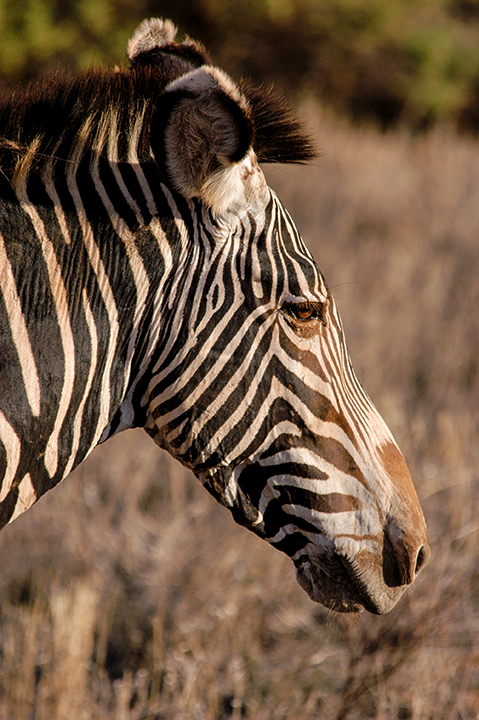

On the basis of the above results, a policy of translocation was advocated for small, intensely managed populations of zebras, whereby a harem should be translocated every five years for a population size of nine (HJNR), while for a population size of 110 (VCNR) translocations should take place every 15 years if heterozygosity is to be maintained at more than 90% within each population over 100 years. In 2002 the IUCN assessed the population of the plains zebra to be 660,000 individuals in the wild. On the other hand, percentage loss of polymorphism (20-39%) calculated from the PCR-RAPD study appeared to be positively correlated with the loss of heterozygosity predicted by population viability analysis (PVA), and negatively correlated with population size. Allozyme heterozygosities were consistently high in all populations (12.1-12.9%), with no observable losses associated with reduced population size.

Information from PCR-RAPD and allozyme analyses were compared with each other as well as to that predicted by population genetic modelling (using VORTEX). Populations of the latter three, small-sized (9-110 individuals) populations were seeded from the same source population (UGR: current population of 2000) during the past 25 years. While each of these groups have a home range, the groups join. Using standard methods, DNA (PCR-RAPD) and allozyme diversity was assessed in blood samples from 72 plains zebra from four KwaZulu-Natal Nature Conservation Services (KZN-NCS) protected areas: Umfolozi Game Reserve (UGR), Albert Falls (AFNR), Vernon Crookes (VCNR) and Harold Johnson (HJNR) Nature Reserves. Plains Zebra live in all habitats in Africa from sea level to 4,300 m on Mount Kenya, with the exception of rain forests, deserts, dune forests, and Cape Sclerophyllous vegetation (Duncan 1992).Plains Zebra live in family groups of a stallion with mares and their juvenile offspring. Habitat: Inhabits thorn scrub and savannas with rocky outcrops (kopjes) where the tortoise can hide. Population viability analysis (PVA) was conducted with a computer model (VORTEX), and DNA and allozyme analyses were conducted to test the findings of the model. Range: This tortoise is found throughout Kenya and Tanzania. Problems identified in small populations include reduced striping patterns on hind quarters, smaller size, elevated mortality rates and high number of still-births. Plains zebras (Equus quagga antiquorum) occur in few large, but many small, isolated populations in KwaZulu-Natal.


 0 kommentar(er)
0 kommentar(er)
